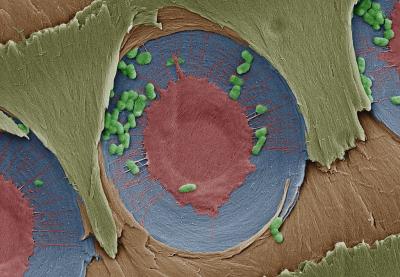[dropcap style=”font-size:100px; color:#992211;”]A[/dropcap] low-tech, easily-grown filter that could effectively remove E-Coli from drinking water and make expensive filtration systems obsolete?
BigPharma moves to suppress-and-destroy mode. Damn those soapdodging hippies and their anti-consumerist folk remedies!
A small piece of freshly cut sapwood can filter out more than 99 percent of the bacteria E. coli from water, according to a paper published by Michael Boutilier and Jongho Lee and colleagues from MIT.
Researchers were interested in studying low-cost and easy-to-make options for filtering dirty water, a major cause of human mortality in the developing world. The sapwood of pine trees contains xylem, a porous tissue that moves sap from a tree’s roots to its top through a system of vessels and pores.
Sapwood’s water-filtering potential
To investigate sapwood’s water-filtering potential, researchers collected white pine branches, stripped the outer bark, and cut them into small inch-long sections. They then mounted each in plastic tubing, sealed and secured, and filtered water through that either contained small particles or E. coli bacteria.
The authors found that sapwood filtered out particles greater than 70 nanometers wide, but was unable to separate out 20-nanometer particles, suggesting that there is a particle size limit to what coniferous sapwood can filter. Sapwood also filtered out more than 99% of E. coli from water, which mostly accumulated in the first few millimeters of the wood in what are known as pit membranes.
 False-color image of tree branch filter.
False-color image of tree branch filter.
Up to four liters of clean drinking water a day
The small- branch filtration system produced water at rates up to four liters of clean drinking water a day, typically enough for one person. However, the authors caution that only hydrated sapwood (and not dried-out wood) will filter out contaminants.
“There’s huge variation between plants,” says Rohit Karnik, senior author on the paper. “There could be much better plants out there that are suitable for this process. Ideally, a filter would be a thin slice of wood you could use for a few days, then throw it away, and replace at almost no cost. It’s orders of magnitude cheaper than the high-end membranes (currently) on the market today.”
Source:Boutilier MSH, Lee J, Chambers V, Venkatesh V, Karnik R (2014) Water Filtration Using Plant Xylem. PLoS ONE 9(2): e89934. doi:10.1371/journal.pone.0089934 http://dx.plos.org/10.1371/journal.pone.0089934
Image: Michael Boutilier and Jongho Lee

Some of the news that we find inspiring, diverting, wrong or so very right.



















